When it comes to salvia, the varieties and options are quite extensive, and the terms salvia and sage are sometimes used interchangeably.
Salvia greggii, also know as Autumn sage is one of the most common San Antonio choices.
- Salvia is one of the longest flowering perennials in San Antonio.
- Bloom colors are most often found in hues of red, pink, coral, purple and white.
- Growing to a mature size of about 18″- 24″ both tall and wide, salvia greggii is a great option for filling in some areas in your perennial garden beds.
- Prune occasionally to keep lush and prevent legginess. This may mean you shear back when there are still some flowers on the plant (because there almost always are), but don’t be shy, flowers will be encouraged by the shearing and appear again in 2-3 weeks. Prune by 1/2 in late winter.
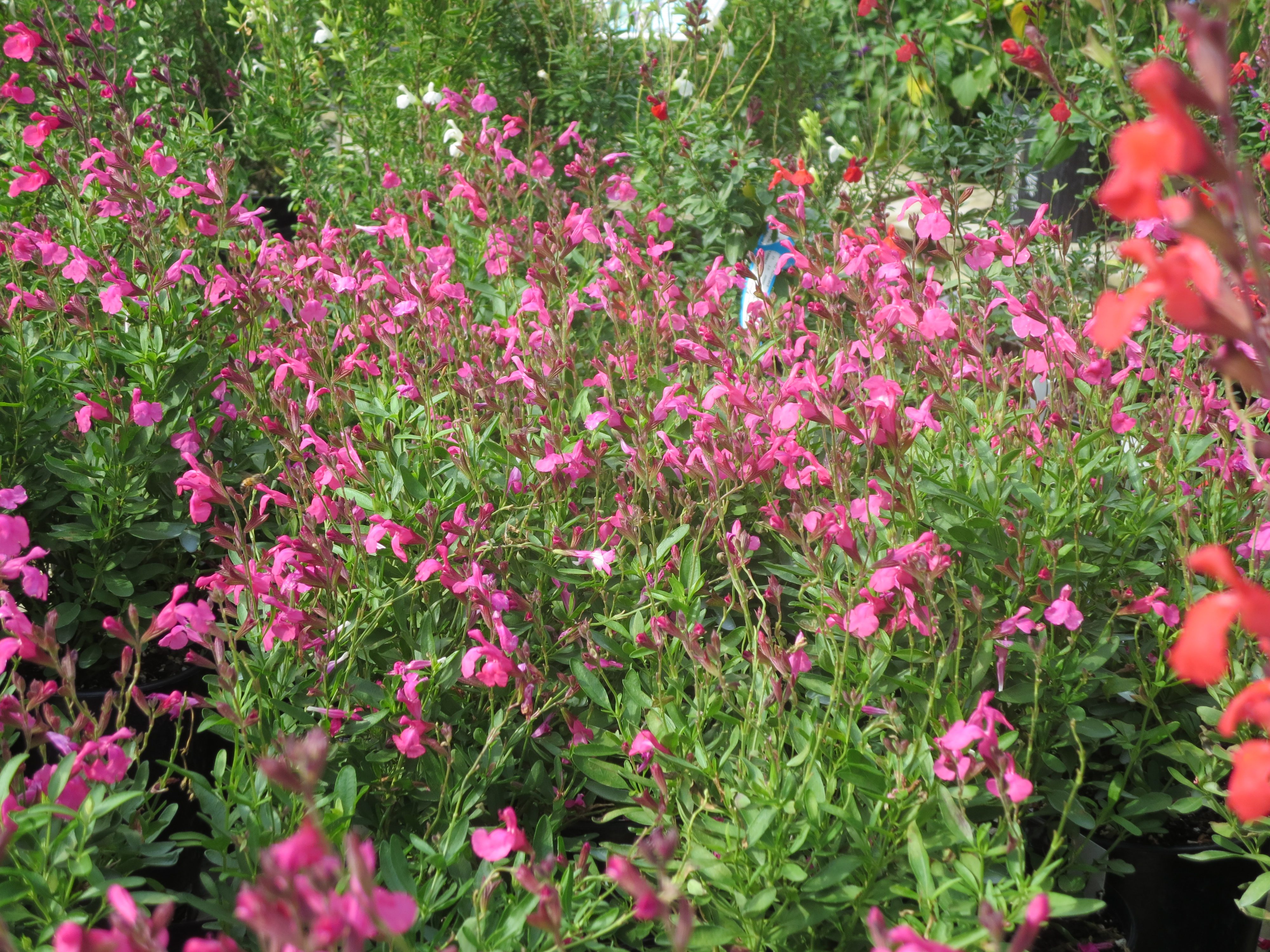
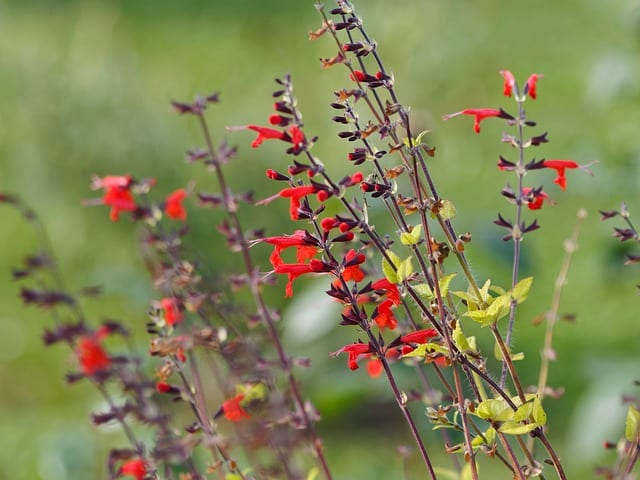
Salvia farinacea are some of our most dependable perennial salvias in San Antonio.
- Varieties like Henry Duelberg and August Duelberg provide beautiful blue and white blooms, respectively.
- A wider spreading salvia, these selections grow to about 3′ high and 3′ wide.
- Henry Duelberg is on the Texas Superstar Plant list which means the plant has been tested to be a tried and true outstanding performer for Texas landscapes.
- The prolific blooms draw butterflies in by the dozens.
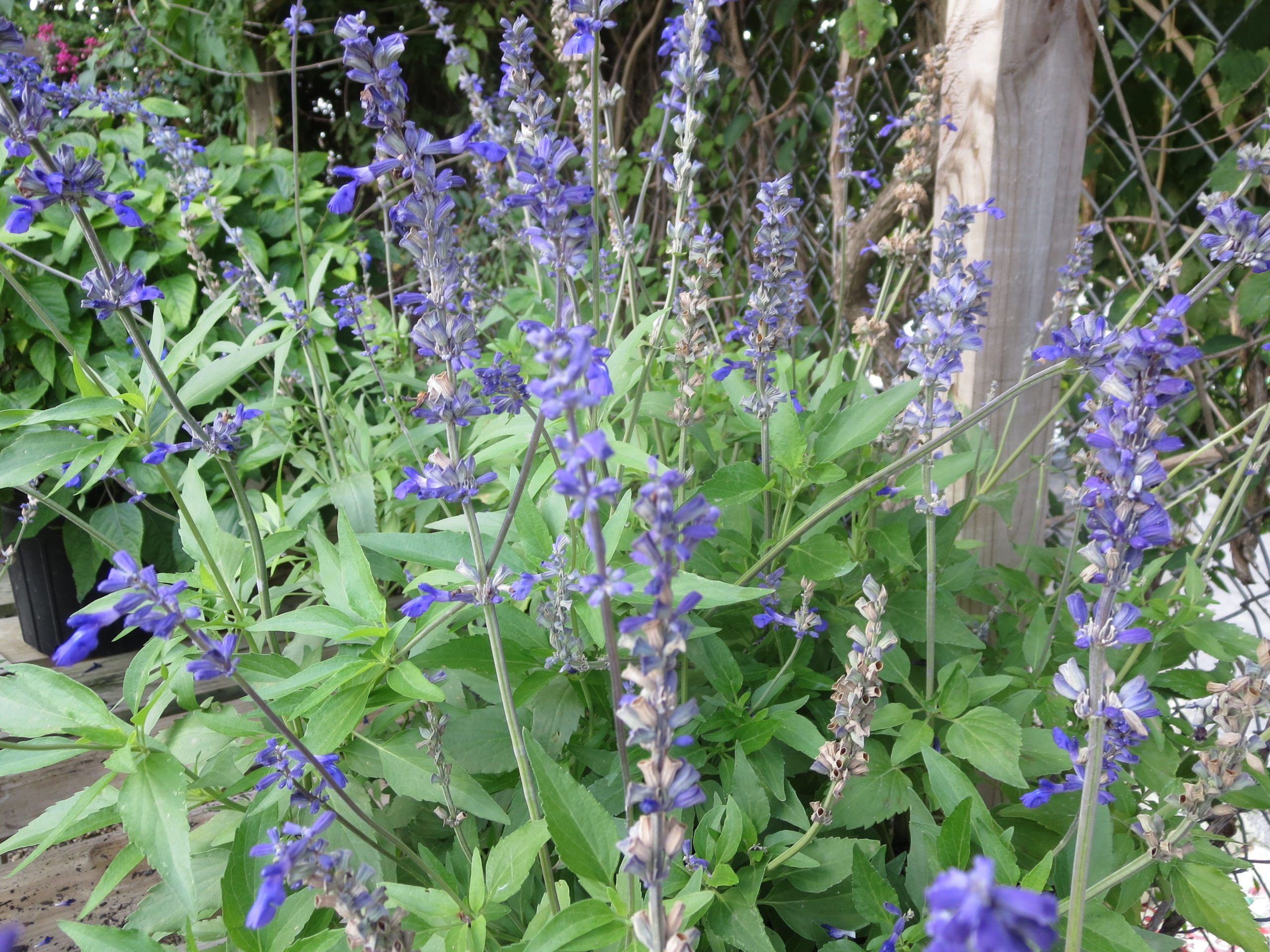
Two very popular salvia varieties for San Antonio and for our customers at Rainbow Gardens are Indigo Spires and Mystic Spires. Both of these salvia varieties do well in full sun to part shade and neither are particularly bothered by pests or disease.
- Indigo spires would probably look best in the backs of your perennial gardens as it grows taller than some salvia varieties, reaching 36″ – 42″ high and 24″ wide.
- Indigo spires salvia boasts the deepest purple-blue spikes of flowers. Plants can be pruned throughout the season since regrowth is fast, but after winter freezes, refrain from cutting to the ground until good regrowth begins in early spring.
- Good drainage is necessary for salvia. Once they are established they are drought tolerant and too much water can result in a lack of flowers and floppy plants.
Mystic Spires salvia is a compact version of Indigo spires.
- You will get the same deep purple-blue flower spikes, even more prolific than Indigo spires, but the compact form makes this salvia ideal for both landscape and containers.


Our final featured salvia in today’s blog is Salvia leucantha, also known as Mexican Bush Sage. This salvia grows 24″ – 36″ high and 18″ – 24″ wide. Santa Barbara Mexican Bush sage is the dwarf version.
While Mexican Bush sage blooms throughout the spring and summer seasons, fall is when this salvia really puts on an eye-popping show. Fuzzy, purple, lavender, magenta, and even light pink (depending on variety) are abundant right when our fall pollinators are searching for nectar.
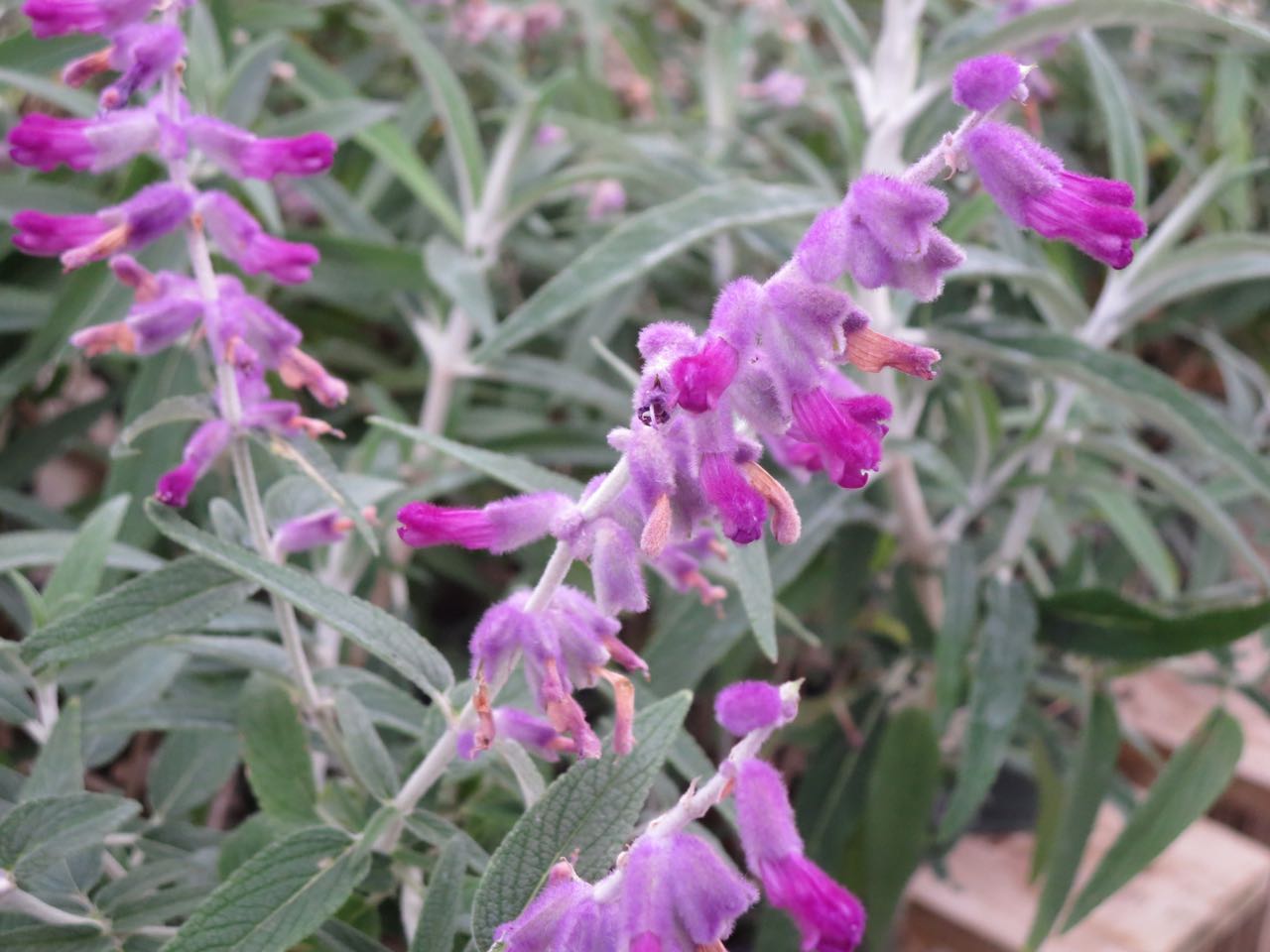
Of course, at Rainbow Gardens we carry a ton of other salvia varieties as well. Salvia microphylla, Salvia guaranitica, Salvia nemerosa, Salvia coccinea, etc… the list goes on and on for great San Antonio landscape choices.
- All salvias need sun in order to produce blooms, but many are tolerant of some shade, especially during the hottest time of the afternoon.
- All salvias are amazing pollinator attractors and will be a great benefit to our ecosystem if planted in your landscape. Walk through our salvia section and hear the buzz of bees, feel the wisp of a butterfly wing grazing your cheek; let the pollinators show you their appreciation for salvia.
- The spectrum of colors and hues that salvia is available in is vast; there is most likely a salvia to fit each and every landscape need.

(Hot lips salvia, another amazing salvia option!)
~ The Happy Gardener, Lisa Mulroy

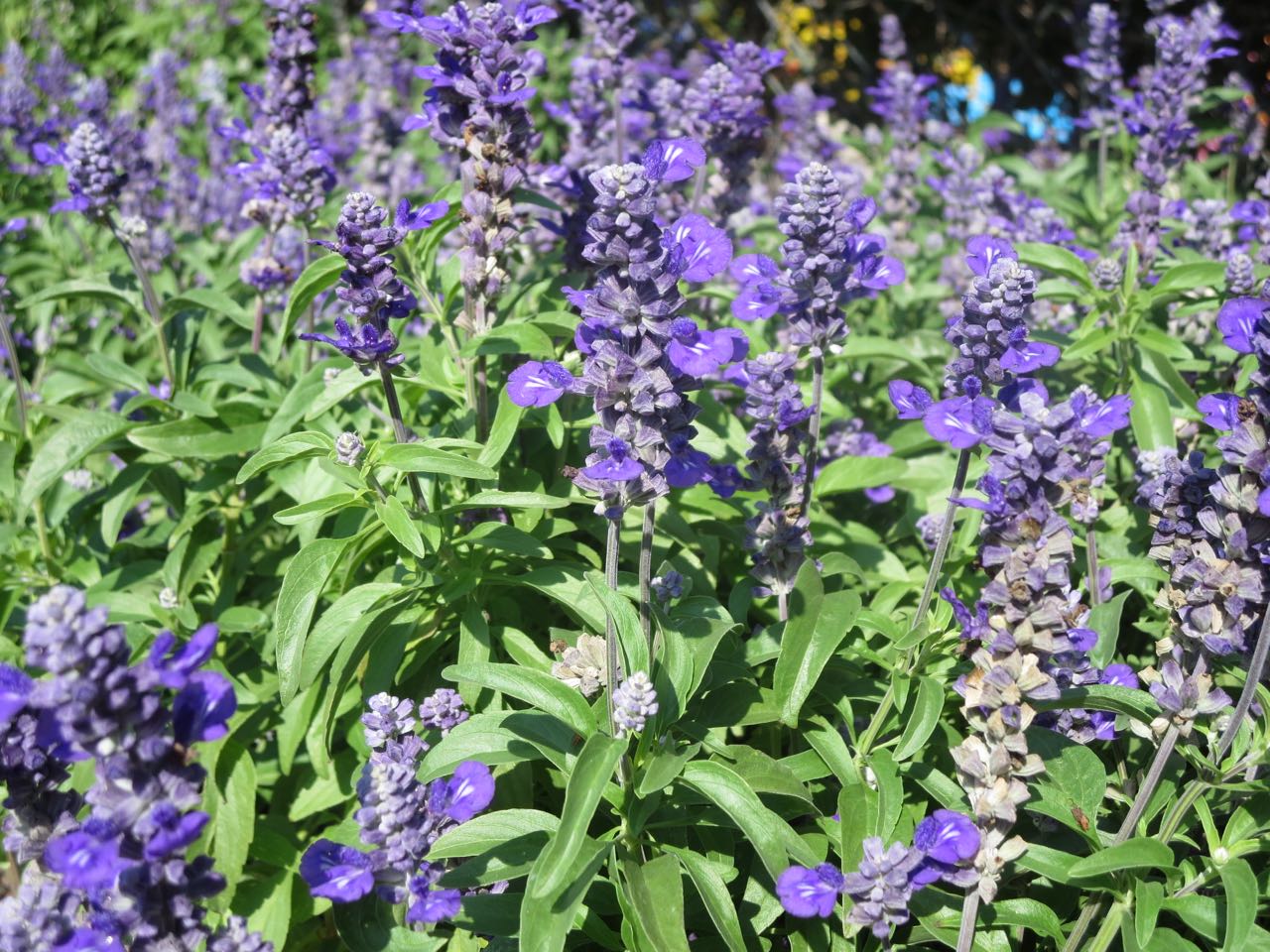
Do you have love & wishes salvia this yest?
Hi Jan,
There is a possibility that Thousand Oaks may be getting some in this Friday. Give them a call Fri or Sat at 210-494-6131.
Are these available right now?
Jose,
As of today we currently have salvia greggii, and a few mealy cup varieties of salvia. We will be bringing them in all spring when we can find them.
Our inventory changes daily with the supply and demand being very high right now, so I’d advise giving the location you are going to visit a call before heading out to make sure they are still in stock.
When will the thick red salvia come out? How much will it be for a flat?
We advise calling the specific location you are interested in shopping at on Thursdays or Fridays to see if our annual salvia has arrived (I think that’s what you are inquiring about.) Some of our deliveries have been delayed a few weeks, so it’s best to call or stop by to get up to date info on shipments.
Hi, do you have the saliva plants, lantanas, and drift roses?
If so, which location?
Thanks
Hi Cynthia,
Both locations have salvia and lantana usually stocked by Wednesdays or Thursdays. By Saturday afternoons, they may be cleaned out. Drift roses come in sporadically here and there. We had them a few weeks ago and now are out, but more could arrive in the next few weeks. Check out our Facebook pages (we have one for each location) and our Instagram for up to date arrivals.
What is your opinion of planting salvias as a companion to rose bushes to keep roses deer resistant, is there some truth to that?
Hi Olive,
My opinion would be that salvia planted with roses would look pretty, but not sure it’s going to do what you’d like as far as protecting your roses from deer. While salvia is usually something deer pass over, roses are like candy to them, and they might plow right through, especially if they are really hungry. Better off planting roses behind a fenced in yard, or try some other scare tactics (motion sprinklers, etc..) to keep them away.